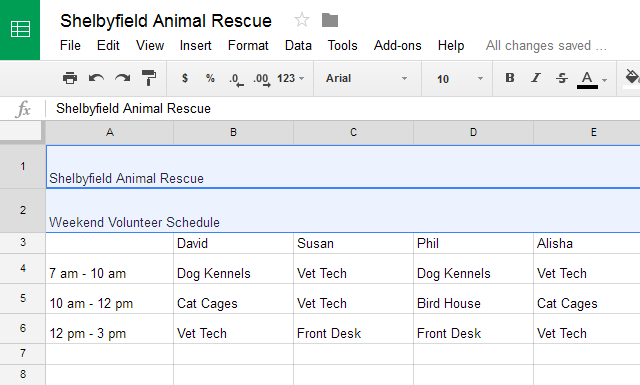
Introduction
In the dynamic landscape of spreadsheet applications, Google Sheets emerges as a powerhouse for data manipulation and analysis. One of the key aspects that elevate the user experience is the ability to format cells with precision. Whether you’re a seasoned data analyst, a student managing assignments, or a business professional organizing financial data, understanding the intricacies of cell formatting in Google Sheets is essential. This comprehensive guide will take you on a journey through the diverse tools and techniques available, empowering you to unleash the full potential of cell formatting in Google Sheets.
Section 1: The Basics of Cell Formatting
1.1 Why Cell Formatting Matters
Cell formatting goes beyond aesthetics; it plays a crucial role in enhancing data visibility, clarity, and interpretation. Properly formatted cells can convey information effectively, making your spreadsheet more user-friendly and professional.
1.2 Types of Formatting Options
Google Sheets offers a myriad of formatting options, including:
- Text Formatting: Font style, size, color, and alignment.
- Number Formatting: Currency, percentage, date, and more.
- Cell Borders: Defining cell boundaries for clarity.
- Background Color: Highlighting cells for emphasis.
- Conditional Formatting: Dynamic formatting based on specified conditions.
Section 2: Text Formatting in Google Sheets
2.1 Font Style and Size
- Select the cells or text.
- Use the toolbar to adjust font style and size.
2.2 Font Color
- Select the cells or text.
- Click on the “A” icon in the toolbar to choose font color.
2.3 Text Alignment
- Select the cells or text.
- Use the toolbar to set text alignment (left, center, right).
2.4 Text Wrapping
- Select the cells.
- Use the toolbar to enable or disable text wrapping.
Section 3: Number Formatting in Google Sheets
3.1 Currency Formatting
- Select the cells with numbers.
- Go to “Format” > “Number” > “Currency.”
3.2 Percentage Formatting
- Select the cells with numbers.
- Go to “Format” > “Number” > “Percent.”
3.3 Date and Time Formatting
- Select the cells with date or time data.
- Go to “Format” > “Number” > choose date or time format.
3.4 Custom Number Formats
- Select the cells with numbers.
- Go to “Format” > “Number” > “More formats” > “Custom number format.”
Section 4: Cell Borders and Background Color
4.1 Adding Cell Borders
- Select the cells.
- Go to “Format” > “Borders” and choose border options.
4.2 Background Color
- Select the cells.
- Click on the paint bucket icon in the toolbar to choose a background color.
4.3 Conditional Formatting
- Select the cells.
- Go to “Format” > “Conditional formatting.”
- Set rules and choose formatting options based on conditions.
Section 5: Advanced Techniques in Cell Formatting
5.1 Format Painter
- Format a cell as desired.
- Click on the “Format painter” icon in the toolbar.
- Click on the target cell to apply the same formatting.
5.2 Using Custom Formulas
- Go to “Format” > “Conditional formatting.”
- Choose “Custom formula is” and enter the formula.
5.3 Copying Format from Another Cell
- Right-click on the source cell.
- Choose “Format painter.”
- Click on the target cell to apply the formatting.
Section 6: Cell Formatting Best Practices
6.1 Consistency
Maintain consistency in formatting throughout the spreadsheet for a professional look.
6.2 Clarity
Use formatting to enhance the clarity of your data, making it easy to read and understand.
6.3 Conditional Formatting Tips
- Utilize color scales for gradient effects.
- Apply icon sets for visual indicators.
6.4 Protecting Formatting during Data Entry
Use Google Sheets’ protected sheets and ranges feature to prevent accidental changes to formatting.
Section 7: Keyboard Shortcuts for Cell Formatting
7.1 Ctrl + B / Cmd + B
Bold text.
7.2 Ctrl + I / Cmd + I
Italicize text.
7.3 Ctrl + U / Cmd + U
Underline text.
7.4 Ctrl + Shift + $
Apply currency formatting.
7.5 Ctrl + Shift + %
Apply percentage formatting.
Section 8: Troubleshooting Cell Formatting Issues
8.1 Clearing Formatting
- Select the cells.
- Go to “Format” > “Clear formatting.”
8.2 Resetting Formatting
- Select the cells.
- Go to “Format” > “Number” > “Automatic.”
8.3 Formatting Errors
Check for errors in custom formulas or conflicting formatting rules in conditional formatting.
Conclusion
As you navigate the expansive realm of cell formatting in Google Sheets, remember that it is not just about making data visually appealing – it’s about conveying information effectively. From basic text and number formatting to advanced conditional formatting techniques, this comprehensive guide has equipped you with the knowledge to wield formatting tools with precision. Whether you’re crafting financial reports, academic assignments, or collaborative projects, the ability to format cells in Google Sheets is a key ingredient in presenting data with clarity and professionalism. Welcome to the world where each cell’s format tells a story, and your spreadsheet becomes a canvas for data storytelling.